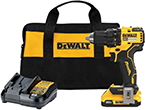Sharpening Your Own Tools
Written by Lee Wyatt (last updated October 16, 2020)
Part of making sure that you have tools that are in good working order is to ensure that they are nice and sharp. While you can always spend some money to get someone else to do the job for you, it doesn't hurt to learn how you can do the job yourself. Be aware that sharpening your own tools can very easily lead to a mistake that requires you end up purchasing a new tool. In addition, be aware that each tool will typically require its own unique method for sharpening so the guidelines listed here will give you some general information only.
- Use the right tool. There are several items that you can use to ensure that you get a nice sharp edge on your tools. Make sure that you use the right sharpening item for the right tool. For most tools you will be able to simply use a file to get the job done. Some tools (such as knives and scissors) will require that you use a special hand held sharpener to get the job done. Stay away from using a powered sharpener or grinder until you have plenty of experience with this task. If you don't, then you can easily end up destroying a tool.
- Follow the factory bevel. Run the file, or sharpener, along the premade factory bevel. Gently run the sharpening tool along the beveled edge, and pushing it a direction that is away from you. Take a break after each time that you runt he sharpening tool along the edge to check your work. Once you notice that you have exposed fresh steel all along the edge, begin working away any burs that you may have created.
- Don't grind too much. Be careful that you do not grind too much of the blade away, or you can easily find yourself with a worthless hunk of junk. Don't be afraid to test the edge of the blade frequently, being careful to not cut yourself while doing this.
- Wipe down the blade. After you have achieved the edge that you want, it is time to clean the tool. This will not only help remove any remaining steel dust (which could damage the tool) it will help to protect the tool from rust. With the tool now sharpened store it properly so that you can grab it and use it when you need to.
Author Bio
Lee Wyatt
Contributor of numerous Tips.Net articles, Lee Wyatt is quickly becoming a regular "Jack of all trades." He is currently an independent contractor specializing in writing and editing. Contact him today for all of your writing and editing needs! Click here to contact. Learn more about Lee...
Creating a Perfect Bedroom
Everyone wants to create a perfect bedroom. The bedroom is arguably the single most personal room in the entire home. It ...
Discover More
Planning an Irrigation System for Your Garden
Planning an irrigation system for your garden is, in many ways, quite different from doing the same thing for your yard. ...
Discover More
Deciding Between Latex and Oil-Based Paints
When talking about a painting project around the home, there are really only two choices in paint-latex or oil based. But ...
Discover More
More Home Improvement Tips
A Great Cordless Garden Hedge Trimmer
When it comes time to begin trimming, cutting back, or otherwise pruning your bushes and hedges, then a garden hedge ...
Discover More
Essential Tools for the Home Plumber
If you are thinking of doing any type of plumbing work yourself, you need to make sure that you have the right tools for ...
Discover More
Keeping Nails from Splitting Wood
Have you ever tried to hammer a nail into a piece of wood, say for a repair or something, only to have the wood split on ...
Discover More

Comments